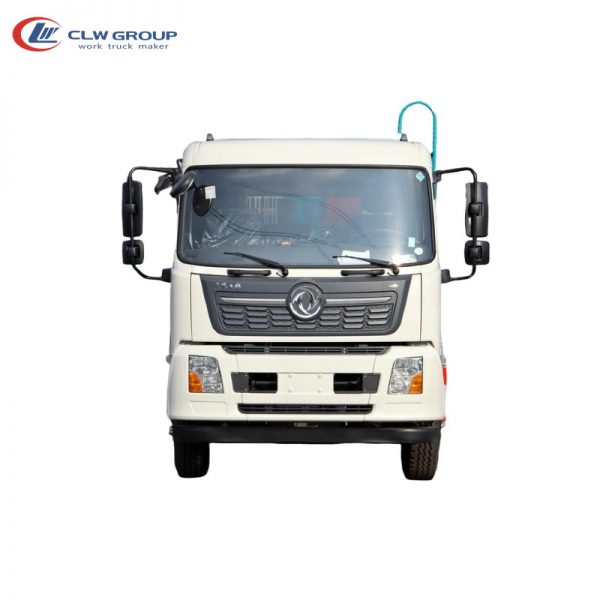Introduction
Garbage trucks play a crucial role in waste management systems, efficiently collecting and transporting solid waste from residential, commercial, and industrial areas to disposal sites. One of the key components of a garbage truck is its cab configuration, which determines the comfort and safety of the driver, as well as the overall efficiency of waste collection operations. Over the years, garbage truck cab configurations have evolved significantly to meet the changing demands of the industry. In this article, we will explore the evolution of garbage truck cab configurations, examining the different types of cabs used in modern waste management vehicles and the advantages and disadvantages of each.
Early Garbage Truck Cab Configurations
The earliest garbage trucks were simple vehicles with basic cab configurations that offered little in terms of comfort or safety for the driver. These early models often featured open cabs that exposed the driver to the elements and the odors emanating from the collected waste. As the need for more efficient waste collection grew, manufacturers began to develop enclosed cab configurations that provided better protection for the driver and improved visibility of the surrounding environment.
Types of Garbage Truck Cab Configurations
1. Conventional Cab
The conventional cab configuration is the most common type of cab found in garbage trucks today. It features a separate compartment for the driver, with a windshield and side windows for visibility. The driver's seat is typically positioned in the center of the cab, providing a clear view of the road and the collection area. Conventional cabs offer a good balance of comfort and functionality, making them popular among waste management companies.
Advantages:
- Good visibility for the driver
- Comfortable seating arrangement
- Easy access to controls and instruments
Disadvantages:
- Limited space in the cab
- Restricted movement for the driver
- May be less aerodynamic than other cab configurations
2. Low-Entry Cab
The low-entry cab configuration is designed to improve the ergonomics of waste collection operations by lowering the entry height of the cab. This allows the driver to enter and exit the vehicle more easily, reducing the risk of injuries and fatigue. Low-entry cabs are often used in side-loading garbage trucks, where the driver needs to frequently stop and start the vehicle to collect waste from curbside bins.
Advantages:

- Improved driver comfort and safety
- Easy access to the cab
- Suitable for frequent stops and starts
Disadvantages:
- Limited visibility compared to conventional cabs
- May require more maintenance due to complex entry systems
3. Cabover Cab
The cabover cab configuration features a cab that is positioned over the engine compartment, allowing for a shorter overall vehicle length. Cabover cabs are commonly used in compact garbage trucks that need to navigate narrow streets and tight spaces. While cabover cabs offer excellent maneuverability, they may have limited driver visibility and comfort compared to conventional cabs.
Advantages:
- Compact design for urban environments
- Easy maneuverability in tight spaces
- Shorter overall vehicle length
Disadvantages:
- Reduced driver visibility
- Limited cab space for storage
- Higher noise levels due to engine placement
4. Crew Cab
The crew cab configuration is designed to accommodate additional passengers, such as waste collection crew members or supervisors. Crew cabs feature extra seating behind the driver's compartment, allowing for more efficient coordination of waste collection operations. While crew cabs offer increased capacity for personnel, they may sacrifice some driver comfort and visibility compared to other cab configurations.
Advantages:
- Increased capacity for additional crew members
- Improved communication and coordination between team members
- Versatile for different waste collection tasks
Disadvantages:
- Reduced driver visibility
- Limited space for driver comfort
- Higher vehicle weight and reduced payload capacity
5. Side-Loading Cab
The side-loading cab configuration is specifically designed for waste collection trucks that pick up waste from curbside bins. These cabs feature a unique design with doors on the side of the vehicle, allowing the driver to easily access the collection area without exiting the cab. Side-loading cabs are ideal for residential waste collection routes where frequent stops are required.
Advantages:
- Easy access to curbside bins
- Efficient waste collection process
- Reduced risk of driver injuries during collection
Disadvantages:
- Limited driver visibility to the rear of the vehicle
- May require additional training for safe operation
- Not suitable for all types of waste collection tasks
Conclusion
Garbage truck cab configurations have come a long way since the early days of waste collection, with manufacturers continuously innovating to improve driver comfort, safety, and efficiency. The evolution of garbage truck cabs has led to a diverse range of configurations, each tailored to meet the specific needs of different waste collection operations. Whether https://www.worktruckmaker.com/chengli-dongfeng-d6-multi-functional-railway-dust-suppression-truck/ 's a conventional cab for general waste collection or a low-entry cab for frequent stops, there is a cab configuration to suit every waste management company's requirements. By understanding the advantages and disadvantages of each cab type, waste management professionals can make informed decisions when selecting the most suitable garbage truck for their operations. As technology advances and industry standards evolve, we can expect to see further improvements in garbage truck cab configurations, paving the way for more efficient and sustainable waste management practices in the future.
